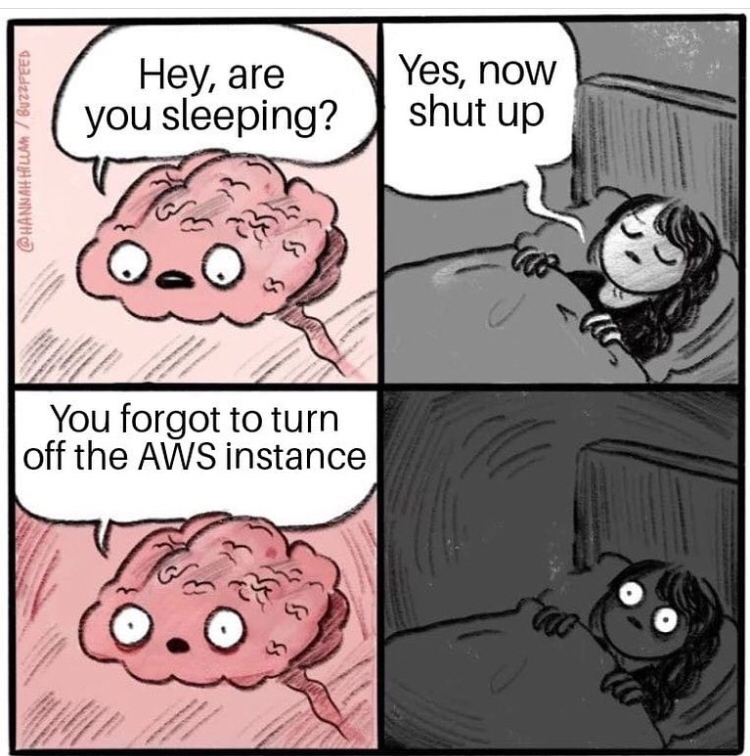Monitoring in AWS doesn’t have to be expensive. In this guide, we’ll walk through real-world strategies to detect and respond to security events in AWS without blowing your budget — using a mix of native tooling, automation, and open-source solutions.
Table of Contents
- Introduction
- Why AWS Monitoring Costs Spiral
- Key Principles for Cost-Effective Monitoring
- Low-Cost Native AWS Tools for Security Monitoring
- Open-Source Solutions That Complement AWS
- Example Architectures & Pricing
- Automation Snippets for Cost-Efficient Alerts
- Common Pitfalls to Avoid
- Conclusion
Introduction
When people talk about security monitoring in AWS, the conversation quickly jumps to expensive SIEM tools or overengineered pipelines. But if you’re running lean, or just want better control over where your money is going, you can achieve excellent security visibility with surprisingly low cost.
This article breaks down how to do exactly that.
We’ll cover:
- Which AWS services give you security telemetry for free (or close to it)
- How to set up event-driven alerts with minimal runtime costs
- Open-source options that plug into AWS without turning into money pits
- Architecture patterns for teams of all sizes
By the end, you’ll have a solid strategy that keeps your AWS environments monitored — without needing to sell an organ.

Why AWS Monitoring Costs Spiral
Understanding the primary cost drivers helps you design smarter from the start:
- CloudWatch Logs: billed by ingestion volume and retention duration.
- CloudTrail: multi-region trails with long-term S3 storage + optional CloudTrail Lake.
- AWS Config: charges per rule evaluation.
- Athena queries: priced per TB scanned — expensive if used without partitions.
- SIEM integrations: agents like Datadog or Rapid7 can multiply costs fast.
Add to that naive setups like “log everything forever” or “query daily with no filters,” and you’re in trouble.
Key Principles for Cost-Effective Monitoring
- Start with native tools: AWS services like EventBridge, CloudTrail, and Config already provide tons of signal.
- Event-driven > polling: Trigger Lambdas from EventBridge or GuardDuty rather than running scheduled functions.
- Don’t store what you won’t analyze: Be selective about what you keep beyond 30–90 days.
- Use cold storage smartly: S3 + Glacier Deep Archive = cheap long-term retention.
- Treat logs as tiered assets: hot (analyzed), warm (queryable), cold (archived).
Low-Cost Native AWS Tools for Security Monitoring
🔍 CloudTrail
- Captures API-level activity.
- Free for 90 days in Event History.
- For long-term: use an org-wide trail → S3 + lifecycle policy.
What to watch for:
ConsoleLoginAssumeRoleUnauthorizedOperation
Use EventBridge rules or metric filters on these events to alert.
📈 CloudWatch Logs & Metric Filters
- Logs cost per GB ingested and retained.
- Set up metric filters on important events (from CloudTrail logs) to track threats.
Example filters:
- Root login usage
- Access denied errors
- Security group changes
Pair with CloudWatch Alarms to notify via SNS.
🎯 EventBridge
- Serverless event router.
- Filter and forward events to Lambda, SNS, or other targets.
Use for:
- Security Hub findings
- IAM changes
- GuardDuty alerts
Pricing is negligible at moderate volume.
⚙️ AWS Config (targeted)
Only enable the rules you care about, like:
- S3 bucket public access
- IAM root usage
- CloudTrail enabled
Stay under the free tier (100 evaluations/month) or use it sparingly.
🚨 Security Hub + GuardDuty
- Free for 30 days, then priced by finding volume.
- Use with EventBridge to auto-respond only to High/Medium severity.
Open-Source Solutions That Complement AWS
🛡️ Wazuh
- Lightweight SIEM alternative
- Deploy in ECS Fargate Spot or EC2
t3a.small - Collect CloudTrail logs via Filebeat
- Store in S3 with lifecycle policies
Bonus: enrich with GeoIP, threat feeds, file integrity monitoring
🔍 OpenSearch (self-hosted)
- Use a minimal cluster (e.g., 2 nodes in
t3.medium) or serverless preview - Avoid expensive retention — snapshot to S3 after 7–14 days
- Kibana dashboards for audit logs, login attempts, or GuardDuty
📊 Prometheus + Grafana
- Use
cloudwatch_exporterto pull metrics securely - Great for EC2 / Lambda / API Gateway visibility
- Host Grafana in AWS Amplify or Fargate
Example Architectures & Pricing
💡 Single-Account / Starter Org (under $25/mo)
- CloudTrail → S3 + 30-day lifecycle
- CloudWatch Log group for VPC flow logs (1 env)
- Metric filters for key events
- EventBridge + Lambda notifications
🧠 10-Account Org (under $75/mo)
- Org-level CloudTrail
- Centralized logging bucket
- Athena for on-demand queries (partitioned)
- GuardDuty in key regions
🧰 Hybrid Open Source (under $60/mo)
- Wazuh on Spot EC2 / Fargate
- Logs ingested into OpenSearch for 7 days
- Archived to S3 Glacier after
Automation Snippets for Cost-Efficient Alerts
🎯 EventBridge Rule (UnauthorizedOperation)
{
"source": ["aws.cloudtrail"],
"detail-type": ["AWS API Call via CloudTrail"],
"detail": {
"errorCode": ["UnauthorizedOperation"]
}
}
📏 CloudWatch Metric Filter (Root Login)
filter pattern: "$.userIdentity.type = \"Root\" && $.eventName = \"ConsoleLogin\""
🔔 SNS Notification from Lambda
import boto3
sns = boto3.client("sns")
sns.publish(
TopicArn="arn:aws:sns:region:account:topic",
Message="Root login detected!",
Subject="Security Alert"
)
Common Pitfalls to Avoid
- Over-collecting VPC flow logs (use
sampledmode for dev) - Ignoring storage lifecycle → logs build up, cost you
- Enabling every AWS Config rule → high evaluation cost
- Too many EventBridge rules → simplify to key patterns
- Relying on vendor agents for everything
Conclusion
Security monitoring in AWS doesn’t have to be expensive — it just has to be intentional.
Start with native tools. Build in automation. Store smart. And grow from there.
With this approach, you can:
- Stay compliant
- Detect threats
- Reduce your cloud bill
If this helped you rethink your AWS monitoring setup, consider subscribing to The Hidden Port — where we explore more real-world strategies like this, every week.
You may also like: